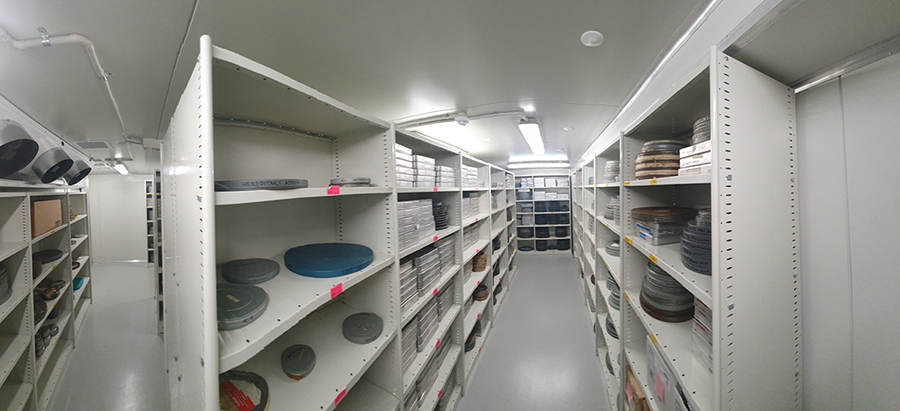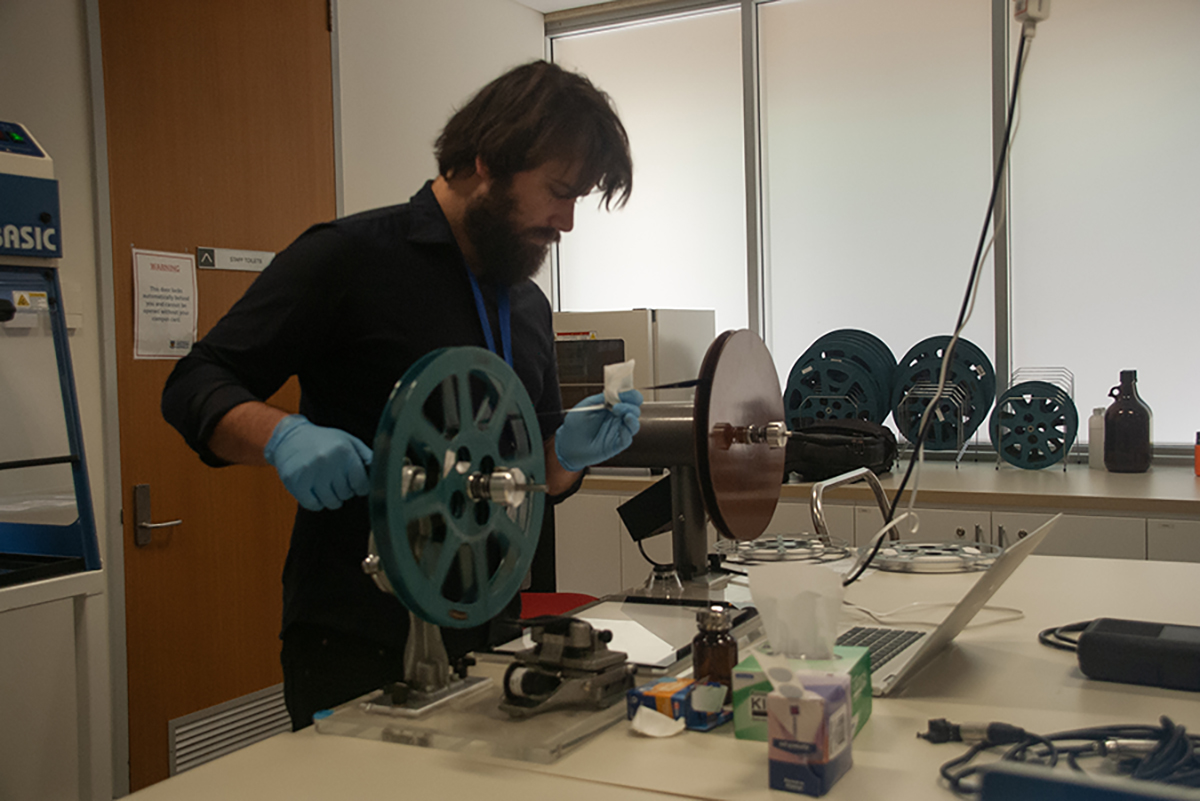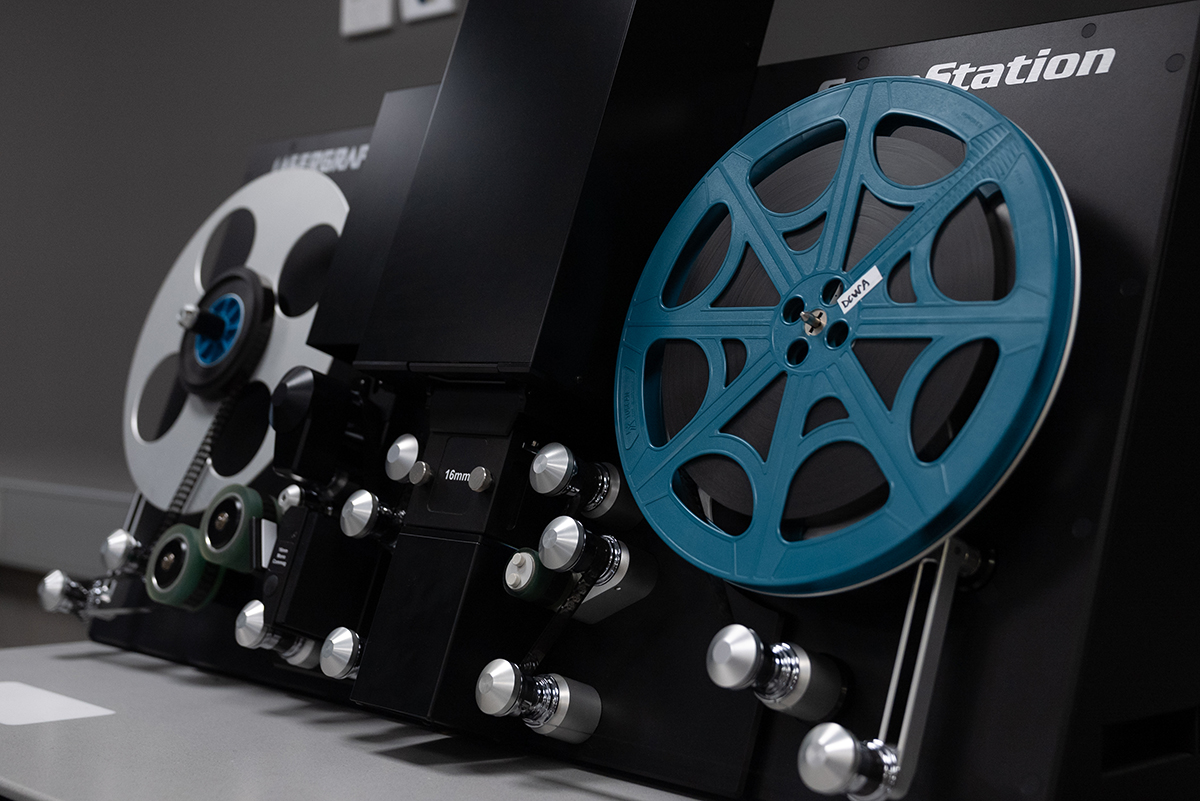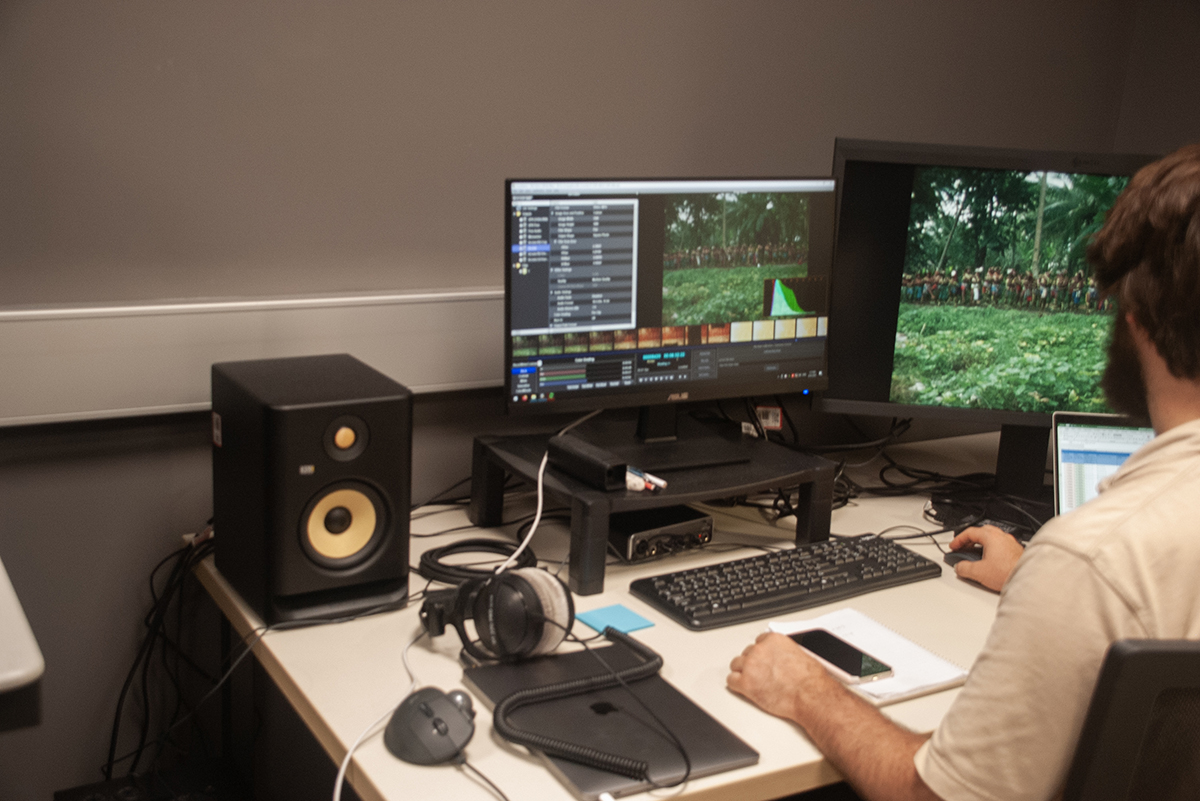The Digitisation Centre of Western Australia (DCWA) has recently completed the digitisation of the first tranche of films from the Melanesian Film Archive at Curtin University. This is a significant collaboration project between the DCWA and Curtin University.
The Melanesian Film Archive Collection
The Melanesian Film Archive is an extensive collection of medical and anthropological films. The medical films are principally concerned with the neurodegenerative disease kuru, and the work of Professor Michael Alpers in discovering the transmission of the disease which was confined to the Eastern Highlands of Papua New Guinea. Curtin has been the custodian of this Archive since 2005, when the Archive was transferred into the care of Curtin University and Professor Michael Alpers. While the physical films are in an environmentally controlled facility built on the Curtin University campus, they have been inaccessible due to their original format.

Image 1: Film reels in the Melanesian Film Archive are stored in a purpose-built cold room, but without the required playback equipment these research documentary films are inaccessible to most people. Image source: Curtin University Archives (https://www.curtin.edu.au/archives/melanesian-film-archive/)
Digitising the Melanesian Films
Following a successful joint bid for the Linkage, Infrastructure, Equipment and Facilities (LIEF) grant with all five Western Australian universities, the State Library of Western Australia and the Western Australian Museum in 2019, the DCWA was established. A period of implementation and testing followed as staff were engaged, equipment purchased and installed. In late 2021, Curtin University began despatching the films contained in the Melanesian Film Archive to the DCWA regularly. Many of the films, dating back to the 1920s created by anthropologists and scientists from around the world, capture a way of life that has slowly changed or vanished over the 20th century as modern world steadily advanced into the remote regions of Papua New Guinea.
A team of dedicated digitisation officers in the DCWA prepared the films for digitisation, carried out scanning to 2k resolution and returned digital preservation and access files for Curtin to finalise processing and uploading to Curtin’s digital repositories. Working with Curtin, DCWA has digitised 674 films to this point, with more than 262 hours of footage scanned and 242.46 TB of data created. This is by far the largest digitisation project for Curtin and the DCWA.
What’s next for the Melanesian Film Archive digitisation project?
These rare ethnographic films are now digitally preserved to archival standards and are available to research communities in this region and around the world. It also means that over time Curtin University can develop options to digitally return the films to their source communities. The digitisation has also enabled the development of a new film on salt making, a complex ethnographic study, and annotation of existing catalogue records by original film makers. This clip depicting the Keiagana people of Papua New Guinea shows a little of the work that has been achieved: https://www.youtube.com/watch?v=_u58gNjv7No. For more information about the Melanesian Film Archive, please visit: https://www.curtin.edu.au/archives/melanesian-film-archive/.
Film digitisation at the DCWA – people and process
Our digitisation officer Jameson Feakes has been involved in the digitisation of the films in the Melanesian Film Archive since this project began. Looking back, he thought this digitisation project was very special to the DCWA and to him personally:
“It has been a privilege working on the digitisation of the Melanesian Film Archive and being the first to see some of this footage in many decades. I’m also very thankful that Curtin entrusted us with such a valuable collection of films in the early days of DCWA, allowing us to show that we’re capable of producing world-class digitisation results. I’m very thankful to be in a role that allows me to experience such unique archival material, and I hope that the repatriation of these films to their source communities will be immensely valuable.”
Here is a glimpse of the digitisation process for films, including the ones in the Melanesian Film Archive at the DCWA:
When the films are received, the digitisation officer will check the acidity level of the films for vinegar syndrome, inspect the films and carry out necessary cleaning, splicing and repair work.

Image 2: Our digitisation officer Mr Feakes winding through and cleaning a film from the Melanesian Film Archive.
After preparation, the films will be put on the Lasergraphics ScanStation 6.5k machine for scanning. The set up in the DCWA offers up to 6.5k resolution, scanning speeds of up to 60 fps, and handles multiple film gauges including 8mm, Super 8mm, 16mm, and 35mm. The machine reads optical soundtracks at any frame rate and outputs the sound with correct pitch and in sync with the picture. It supports multiple concurrent file outputs for archival preservation and general access purposes. The digitisation officer will monitor the scanning closely and apply basic colour correction on the film footage as required.

Image 3: Scanning of a 16mm film in progress. The DCWA is capable of scanning different types of films of common gauges including 8mm, Super 8mm, 16mm, and 35mm.

Image 4: Basic colour correction will be applied to the footage as required.
After scanning, the film will be wound back to its original core or reel and the item will be returned to the client for long term storage. The DCWA will transfer the digital files to the client via internal server upload or hard drive and retain the digitised films for 30 days while the files are being uploaded to the client’s digital storage system.
For more information about the facilities and services of the DCWA, please visit: www.dcwa.au.
